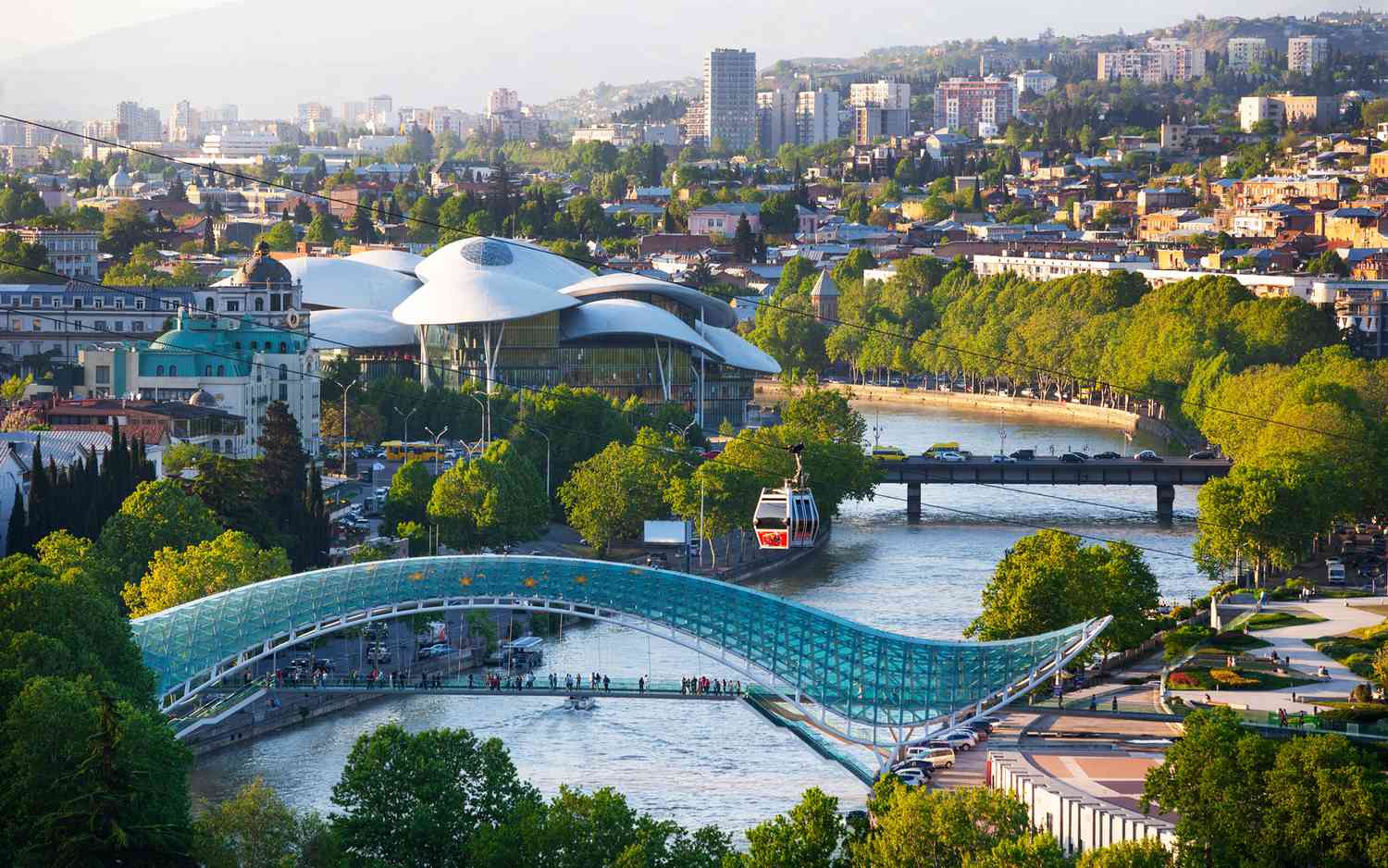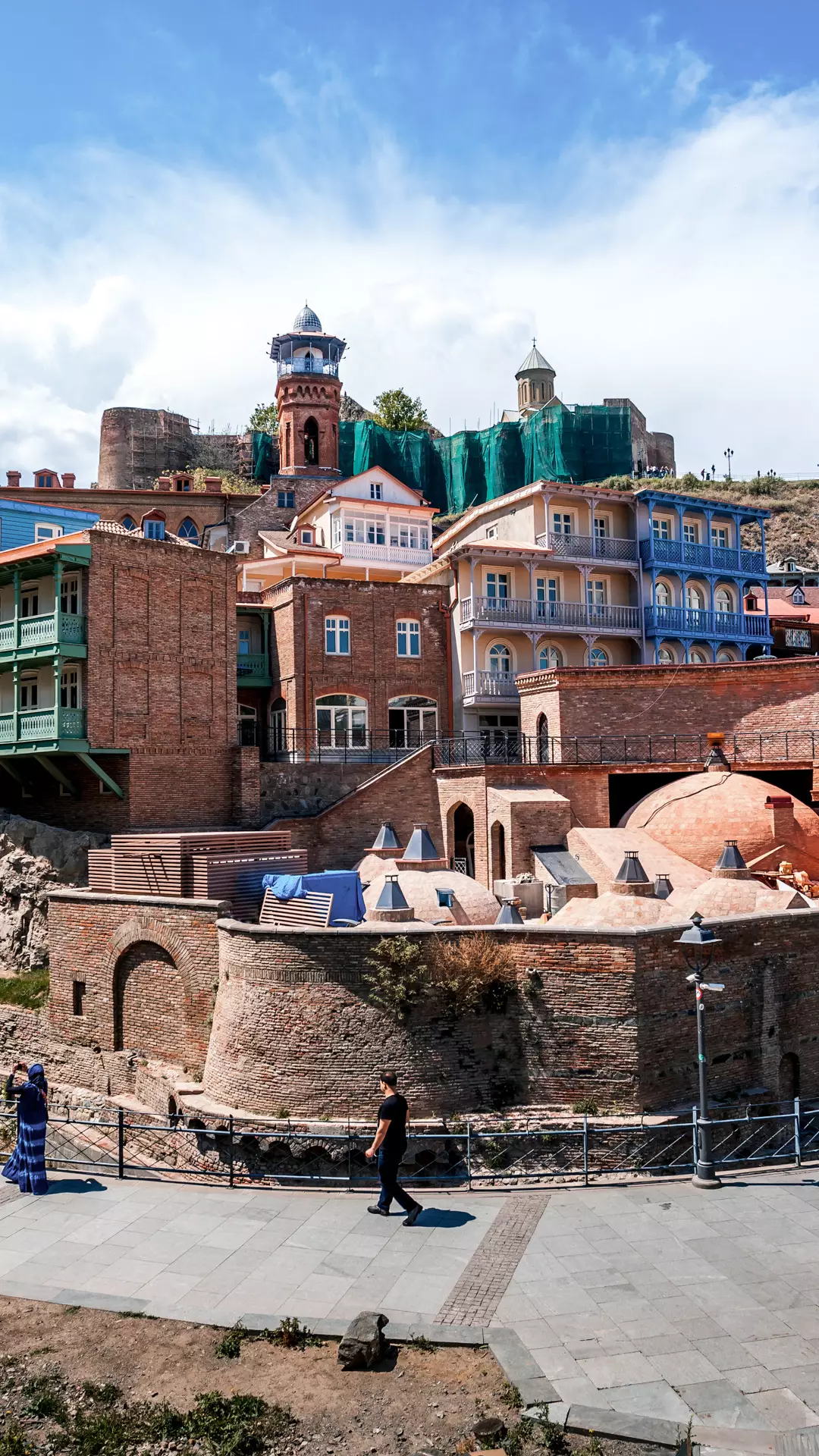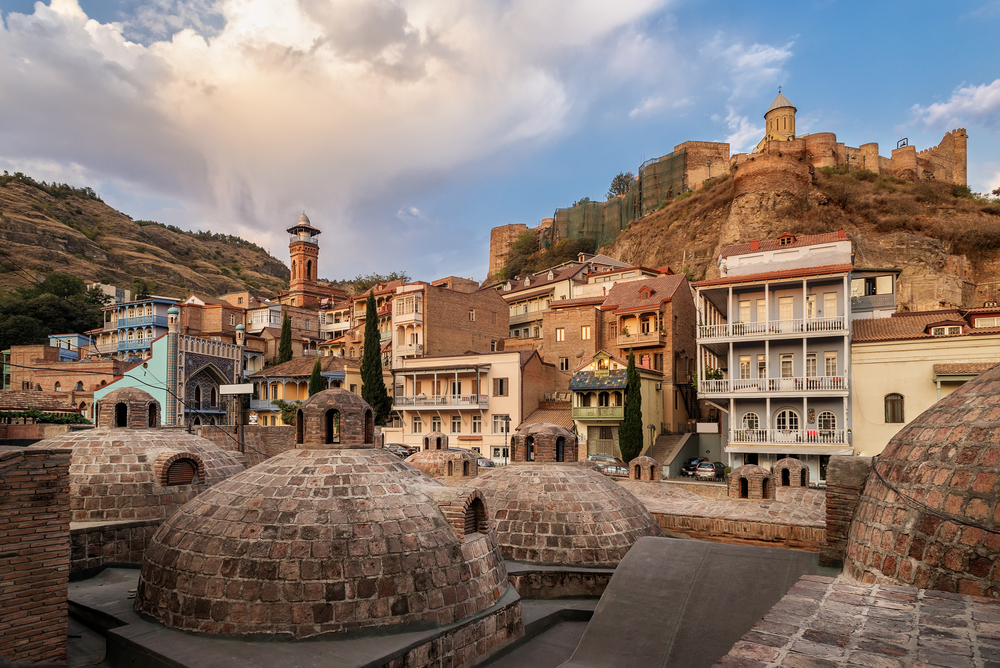
A sort of mild melancholy invades me when arrive in Tbilisi, my first stop in Georgia. After having spent the past weeks cycling through the mountains and countryside of Armenia, entering the bustling city life feels for the moment like being out of place.

Tbilisi is the pulse of Georgia, a tiny country in the Caucasus region with an interesting fusion of European, Middle-Eastern and Soviet culture. After the dissolution of the Soviet Union, the country declared its independence in 1991
I often choose to stay with locals in the cities. It’s not only a way to save money on accommodation, but most importantly it’s a great opportunity to make new friends and feel at home in a foreign place. You learn about their country, culture and traditions from the inside and they learn from yours. However, in Tbilisi, no one is expecting me. My host, a member of a hospitality exchange community, canceled last minute and I am left to my own resources amidst the traffic, noise and the heat of mid-summer.
Tbilisi has an overwhelming choice of affordable hostels. I choose to stay in a guesthouse in Vera district, a quiet and green neighbourhood nestling on a hillside within short walking distance from the Rustaveli Avenue, a central avenue in Tbilisi. The guesthouse is located in a narrow lane above a steep slope and I seem to be the only quest in this newly opened hostel.

Tbilisi is the pulse of Georgia, a tiny country in the Caucasus region with an interesting fusion of European, Middle-Eastern and Soviet culture. After the dissolution of the Soviet Union, the country declared its independence in 1991. For most of the following decade, post-Soviet Georgia suffered from economic instability and political corruption until the Rose Revolution in November, 2003. The peaceful protests culminated with a change of power and the resignation of Eduard Shevardnadze who had ruled the country for more than 30 years.
Georgia has since then turned to the West to foster its new identity away from its Soviet past, and Tbilisi has started to emerge as a business hub and cosmopolitan city. In 2010, the government started an enthusiastic Programme to revitalize the city and the development of the tourist industry has made Georgia and its capital very accessible and attractive to foreign visitors. Travelers of all kinds have started to flock there.

On my first stroll through the city, I approach the Old Historic District along the Sololaki Alley, a shaded and pine-scented path that runs along the flank of the hill overlooking the city. Hypnotized by the summer cacophony of cicadas, I soon come across some of the most picturesque views of the city. Tbilisi greets you with its eclectic range of buildings and structures spanning on both sides of the Mktvari river. The pretty facades and modern architecture contrast with overgrown balconies and dilapidated constructions leaning at weird angles; an odd sight of prosperity and decay at once.
At the end of the Sololaki Alley emerges the ruins of the Narikala fortress and the St. Nicholas church dominating the skyline. The fortress dates back to the 4th century and Old Tbilisi has grown below its walls in a maze of kalas or twisting lanes. Below, the Meidan Square is reached by a cobblestone lane quickly identified by the pungent scent of Sulphur and the collection of bricked domes housing the subterranean. bathhouses of Abanotubani. Tbilisi sits on Sulphur water and even the city is named after it. In Georgia tbili means warm.
On the way back to the guest house I walk through the commercial hub parallel to the river, a string of narrow and traffic-free lanes along Sioni street, Erekle t II and Shavteli. Inviting cafes, modern restaurants and art galleries succeed one another amidst historic monuments and old churches, like the Sioni Cathedral and the Jvaris Mama church.
Throughout my travels, I have experienced various forms of bathhouse culture around the world: the Japanese onsen, the Moroccan hammam, the Russian banya and the Finnish sauna. Going to the public bath in Tbilisi seems like an experience not to miss and the next day I go back to Abanotubani District. There are a few bathhouses to choose from, but there is only one that has a communal bath split into male and female, mostly used by locals. For 3 lari – less than 1 Euro- I go to Bath No. 5.

Expecting a communal pool to soak in the women’s section, there is only a communal shower. After removing all your clothes in a shared changing room, you enter a large room with individual head showers. The water is very hot and steamy and you adjust the temperature with splashes of cold water. For an additional charge, you can also get a scrub massage. I am somehow disappointed there is no pool to relax my stiff muscles, and am done in less than 15 minutes. It seems that only the private tiled rooms, aimed mostly for tourists and priced higher with additional services, have pools.
I cross the river to the Dezerter’s Market near the kle train station. Even though modern Georgians prefer ints nowadays to shop in supermarkets and convenience oric stores sprouting everywhere, the Dezerter’s Market iral remains the major central market of Tbilisi. Visiting local markets is always a good way to feel the pulse of a place and discover the local homemade products. ous I stroll through stalls of fruits and vegetables, spices, he cheese and meat, and churchkhela sticks, a traditional an homemade candle-shaped candy made from grape, nuts and flour. They are sweet and richly textured and can he be eaten as a snack or dessert.
I spend four days in Tbilisi. Every day, the weather is e, getting hotter and more humid in August, and I find it Jo difficult to enjoy Tbilisi. I know it’s time to continue to the cooler weather of the Caucasus Mountains. Cycling out of Tbilisi, I notice I am leaving in the same mood ‘s when I first arrived; I feel a lack of connection to the place. I realize that despite having visited some of the beautiful sights, I leave Tbilisi without having made any new friend and I do miss not having created any meaningful story with its people.
A good reason to go back and spend more time later!









